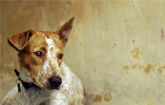Look for signs of early aging to combat mid-life crisis in cats
Mid-life stage for cats starts much earlier than many cat owners may realize
GUELPH, ON, July 4, 2013 /CNW/ - While humans age visibly throughout their lives, cats typically do not begin to show visible signs of aging until well into maturity. By the age of seven though, a cat enters its mid-life stage — a critical timeframe for preventing diseases to help a cat age gracefully.
"Different aged adult cats may essentially look the same on the outside, but around seven years old a lot of changes start happening that may not be noticeable," says Dr. Sara Ritzie, Veterinarian and Manager of Scientific Communications at Royal Canin Canada. "The differences between a young kitten and a one-year-old cat are obvious, but the invisible and subtle differences that occur as cats progress through adulthood are just as important. The mid-life stage starts much earlier than many people may expect."
Cats exhibit three very distinct levels of aging as they mature. Invisible symptoms of the slow aging process in cats actually begin as early as seven years old, as cells age and energy needs decrease. Accelerated visible symptoms begin to take shape during the mid-life stage and can include joint sensitivities and fur changes, such as dandruff, decreased grooming and greasy coat.
At the second stage of aging, kidney disease becomes more prevalent, affecting nearly 33 per cent of cats over 12 years old. At this stage other diseases start to manifest but may not be visible until much later in life, including cognitive disorders in 28 to 50 per cent of cats, and joint sensitivities that affect nearly 90 per cent of the cat population.
"It is critical to look at preventative options at the mid-life stage for cats to prevent these diseases and typical signs of aging from taking hold early," says Dr. Ritzie. "Like for humans, nutrition plays a key role in helping cats maintain a healthy lifestyle as they mature with the right combination of nutrients for each stage of life."
Look for a food formulation that provides specific nutrients for each stage of maturity:
- Vitamins E and C - Adult cats require antioxidants, such as vitamins E and C to protect against cell damage that occurs naturally due to environmental factors, injuries and illness, and day-to-day activities.
- Antioxidants - When a cat reaches age seven, antioxidant needs increase. Adding lutein and taurine provides a broader spectrum of protection against free-radical damage that can cause disease.
- Lycopene - Cats aged 12 and over exhibit the highest amount of free-radical production and benefit from potent antioxidant protection from super-nutrients like lycopene. Because kidney disease is so common in aging cats, a decreased phosphorous level is also important to help support renal function in older felines.
"These nutrients are important building blocks to help your cat age gracefully," says Dr. Ritzie. "Our Aging Feline products are designed for each stage of a cat's maturity for just that reason."
For more information about the role of nutrition in prolonging the health of your aging cat, talk with a pet specialty retailer or visit www.RoyalCanin.ca.
Royal Canin is a worldwide manufacturer and supplier of high quality, specialized dog and cat foods in the veterinary, pet specialty and breeder channels. Its headquarters are in France, 12 production operations exist in 10 countries around the world, including the Canadian plant based in Guelph, Ontario.
SOURCE: Royal Canin

WANT YOUR COMPANY'S NEWS FEATURED ON PRNEWSWIRE.COM?
Newsrooms &
Influencers
Digital Media
Outlets
Journalists
Opted In




Share this article